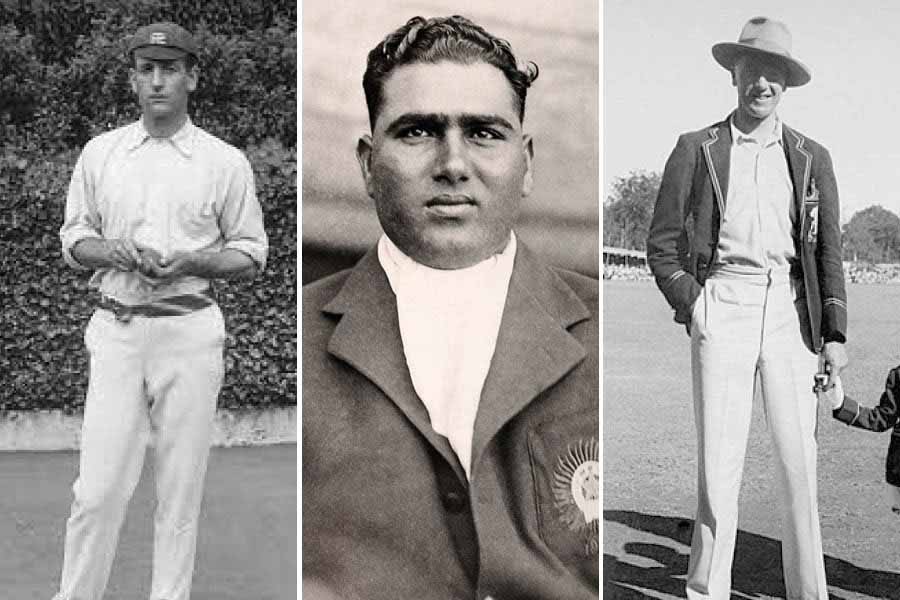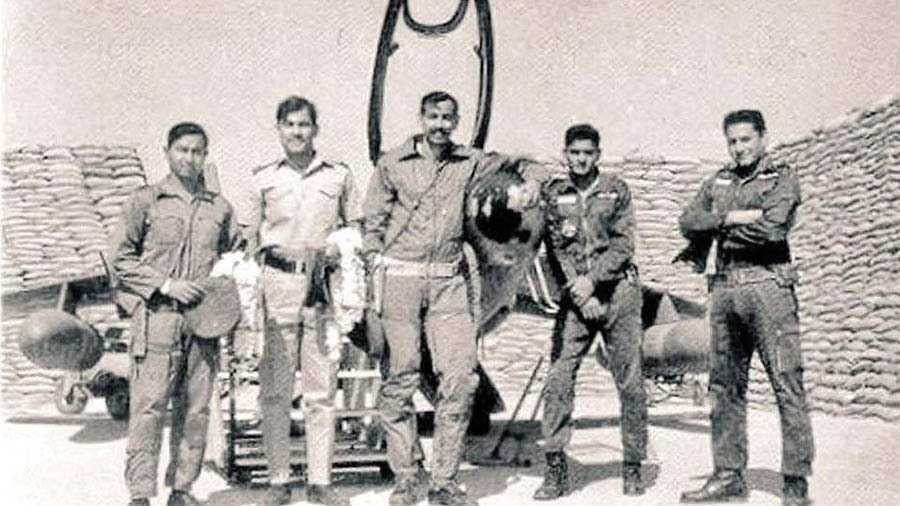The English cricket team is currently touring India with the hosts already having sealed a memorable series win that has seen some hard fought cricket. Today, we look back at the first official tour by an English side 90 years ago when Calcutta’s beloved Eden Gardens took its first bow of Test cricket.
In 1928, British India was admitted as a member of the Imperial Cricket Council*. Four years later, the Indian cricket team played its first-ever Test match at the iconic Lord’s cricket ground. A year later, plans were afoot to secure an official visit by the Englishmen to India. Those plans came to fruition when the tourists’ ship docked at Bombay on the morning of October 12, 1933.
The man leading the group was a ‘Bombay boy’. Just a year earlier, Douglas Jardine, had been at the centre of controversy over his leg-side bouncer bowling strategy – dubbed ‘Bodyline’ by the Australian press, that had propelled the game into crisis and even threatened relations between Britain and her Australian colonies.
But India by and large saw a very different Jardine. Returning to his city of birth after nearly two decades, the English captain was mostly charm personified. A facile nine-wicket win in the first Test at the Bombay Gymkhana Ground – the first ever on Indian soil – must have added to Jardine’s delight. After a string of tour matches criss-crossing northern India, the party arrived in Calcutta just in time for the Christmas of 1933. Eden Gardens stadium was due to play host to its first-ever official Test match.
A welcome party was held on Christmas Eve in honour of the tourists, presided over by the mayor of Calcutta, SK Basu. The English captain was conspicuous by his absence. For most of the time between the first and second Tests, Jardine had been on forest safaris – keen to bag the pride of Indian jungles, a Royal Bengal Tiger. Unfortunately, his efforts, generously aided by Indian maharajahs and nawabs, failed to yield a result. Possibly further worsening the captain’s mood was the fact that leg spinner CS Marriott managed to shoot one. An ultra-competitive person, Jardine must not have taken too kindly to this.
January 5, 1934. Douglas Robert Jardine and Colonel Cottari Kanakaiya ‘CK’ Nayudu stepped out, in pristine white flannels, for the toss. More than half-a-century after the inaugural Test match, Test cricket had finally and officially arrived to Calcutta and Eden Gardens. Jardine called correctly and opted to bat first. India and Nayudu were handicapped by circumstances beyond their control. The match coincided with Holy month of Ramadan and the Playing XI had four Muslims – all fasting. Among them was Mohammad Nissar – the fiery speedster who had taken five-wicket hauls against England both times he had faced them – at Lord’s in 1932 and at Bombay less than a month earlier. But now, on an empty stomach, Nissar could only deliver an opening spell of four overs, much to the relief of the English batters.
England made over 400 with half-centuries from James Langridge, skipper Jardine and left-arm spinner Hedley Verity. Despite his obvious physical discomfort, Nissar sent down 34 overs but his potency was limited and he could take only one wicket. His new ball partner, L Amar Singh, toiled away manfully, taking four for 106 from 54.5 overs while captain Nayudu also picked up three.
When India came out to bat, Jardine got his fast bowlers, ‘Nobby’ Clark and Stan Nichols, to bowl bouncers relentlessly at the Indian batters, in an approach reminiscent of his infamous ‘Bodyline’ strategy. Left-hander Clark was particularly menacing and hit India’s wicket-keeper and opener Dilawar Hussain bang on the head, forcing him to briefly retire. Despite the blow, Dilawar returned to bat, his head swathed in bandages and top-scored with a gutsy 59. However, most of the other Indian batters failed to cope with Clark and Nichol’s pace and Verity’s guile with only young Vijay Merchant impressing with an assured 54. India folded up for 247 and were made to follow-on^.

Bodyline in action Australia versus England, 1932
During India’s innings, Jardine got involved into an altercation with umpire Frank Tarrant. The latter was convinced that Clark was intent on hurting Indian batters and intervened to stop him. Jardine threatened to have him ousted from officiating in the next Test at Madras. The fact that Tarrant was an Australian didn’t help calm down matters.
Was Jardine’s belligerence a result of his foul mood at his failed attempts at shikaar of a tiger? Or was it caused by Nissar striking painful blows to Jardine, Arthur Mitchell and Leslie Townsend during England’s batting? Did Nayudu’s aggressive leg side field placements hurt Jardine’s colonial mindset? Guess, we will never know.
When India batted again, Dilawar Hussain, now batting at 7, once again emerged as the saviour, becoming the first Indian to make two half-centuries in a Test match. Dilawar and Nayudu, who made a patient 38 in 2.5 hours, took India to 237, setting England a target of 82. There was little time for a successful chase but Nissar left a final mark dismissing opener Charlie Barnett for a duck. When stumps were drawn, the tourists were 7/2.
Jardine did not forget Tarrant’s attempts at stopping his Bodyline plans. He managed to get the Australian removed from duty for the Madras Test. It was also the last Test match he ever played.
* predecessor of International Cricket Council (ICC)
^ As it was a 4-day test match, a 1st innings deficit of 150 or more implied following-on
Acknowledgements:
· A Corner Of A Foreign Field: The Indian History of a British Sport, chapter “A Prodigal’s Return”– by Ramachandra Guha (Penguin)
· Speed Merhants: The Story of Indian Pace Bowling, chapter “The Deadly Duo” – by Gulu Ezekiel (Bloomsbury)


